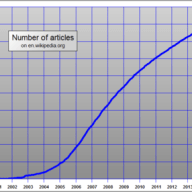The University of Chicago is not known for its athletics, so when I entered it as a first-year student I was very surprised that I had to take and pass a swimming test. Despite my parent’s best efforts, I had never learned to swim, and thus had to take a required quarter of swimming classes. Now, unfortunately, I am a slow learner, particularly on the physical side, and I failed my final swim exam that first quarter. I had to take the course again the next quarter.
I went into my first class in the old Bartlett Gymnasium pool that
cold winter day and dutifully lined up at the edge of the pool like my swim coach told me to do, the edge of the pool at the deep end And I patiently waited instructions. None came. He, instead, moved in back of me and pushed me in. “Sink or swim,” he said. I started to swim. I had been taught the strokes, I had been taught to float, I had been taught to kick and to breathe before. Now I just needed to be pushed off into the deep end where I had to use those skills, conquer my fears, and swim. I am still here today, so though I am not a world class swimmer, I do know how to survive in the water and even enjoy swimming.
I think about my swimming lesson when I talk to students, teachers, and others who fear spreadsheets. I want them to get a couple of simple skills under their belt and just jump into the deep end. No practice dogpaddling in the shallow end of the pool, no kicking exercise holding on to the edge of the pool, no holding your breadth and swimming underwater across the pool are going to turn you into a swimmer. If you want to learn to swim, practice breathing in the water, kicking, and using your arms in a crawl stroke then jump into the deep end of the pool, jump in and swim.
The same holds true for spreadsheets, arguably the most important and most feared business technology we have. Practice using a rule on an input cell to put its output into another cell thus creating a function. Use relative and absolute addressing to copy those functions and build models combining them. And start with a parameter table to enable you to ask, “What if…” of those models.
Go to whatifmath.org and click on Tour to see how simple models can enable you to build and do math across the curriculum. So, I say to teachers and students, “Jump in! The water is fine. You won’t drown. And I promise you will learn how to swim in the spreadsheet ocean and come to really enjoy learning math with spreadsheets in this Happy New Year.”


 Take this tour of
Take this tour of